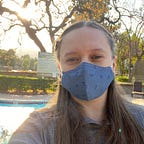Food Insecurity investigation during Hackaton
The world pandemic brought a lot of problems into every city. Food insecurity is one of them. The city of Los Angeles decided to work more with data science enthusiasts and create a hackathon to get another look at the problem. The goal of this event was to help connect residents with on-the-ground resources and organizations that can help. I attend this event to learn more about our city and bring my vision of the data. Unfortunately, I can finish my work with the team in the allotted time for technical reasons, but we managed to do some investigations. And I want to share some interesting facts and numbers which we found.
According to a USC survey conducted between April and July of 2020, 25% of Los Angeles County households experienced food insecurity. Of those experiencing food insecurity, 82% are low income, and 50% have children. © USC site
The city is collecting over 250 indicators. They measured the health, affordability, sustainability, and fairness of our local food system. These indicators span across Los Angeles as a city, county, and a foodshed. We work on a food assistance program and use all data sources which provide organizers.
Open data sources with information about food access:
- Food assistance programs in Los Angeles
- Food pantries in Los Angeles (Food Oasis) and (Controller’s Office list)
- Farmers markets
- Agriculture and food in Los Angeles
The first finding, what we make at the first minute of work, was some of the food social services provided in this datasets located outside the LA borders.
This picture represents the Los Angeles City Council Districts map with borders (blue lines show districts borders). The yellow dots on the map show us where located social food services. The red dots show open food pantries.
We check information on who can attend these food banks and discover that it can be every who can come there.
At the same time, we know that Neighborhood Council Boundaries and Council Districts have different borders.
Some locations: Blue borders show us Los Angeles City Council Districts Map that stays the same from 2012. We take this information from open sources with geodata. Red lines are the updated Neighborhood Council Boundaries layer includes all 97 original councils and two new neighborhood councils subdivided from Westwood neighborhood council and Historic Cultural neighborhood council.
Why this map important? The goal of datasets review is to help connect residents with on-the-ground resources and organizations that can help. So, each point on the map should have two parameters: district and neighborhood affiliation. It helps to define the best phone numbers or closer locations that provide information about available resources.
We also have information about Farmers Markets and food processing organizations. Our data set shows 125 year-round markets and only five seasons depend. It looks you can access farm-fresh every point in LA. But here we need to check to pay capacity.
If we check residents who attended SNAP, we can find out areas with more problems than others.
And how we can see the same areas have problems with grocery access. It brings us areas of “food deserts”.
So far we found out two problems for city:
- Geo problem. When people don’t know or don’t have access to food nearly.
- Resource problem. When residents don’t have or don’t have enough income to provide a good meal for the whole family.
So, we should watch city data on both sides: from residents and organizations that can help.
How do we see the information system? It should be a system that depends on geolocation and shows closer food banks and phone numbers depending on the situation.
Summary
It is the first time when I work with data where every number so close to people. It’s unbelievable to see a food desert in such a big city like LA. But the team of Los Angeles city works hard to prevent this problem. During the discussion, we identified questions to solve and a better way to represent information.
